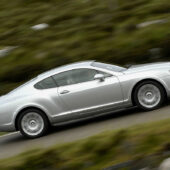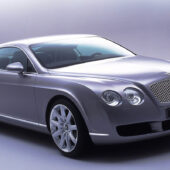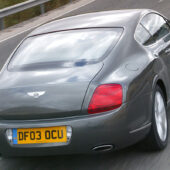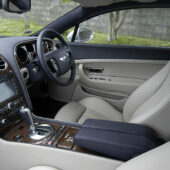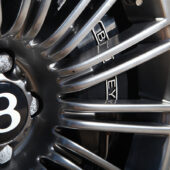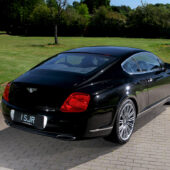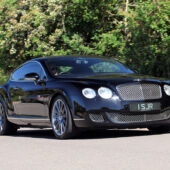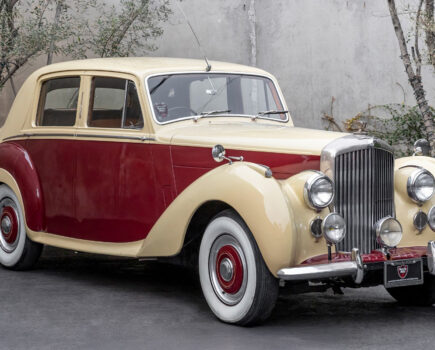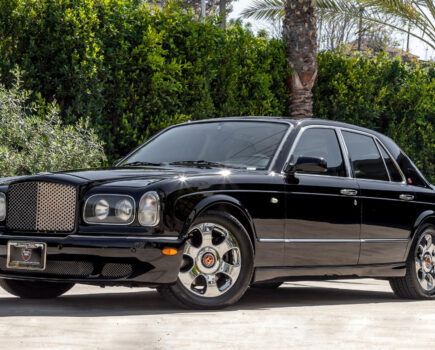It’s hard to beat the 2003-on Bentley Continental GT for luxury and power on a budget. Here’s how to buy well and avoid a money pit
Words: Paul Jackson
When Volkswagen took control of Bentley in 1998, it inherited the then-new Arnage four-door saloon, as well as the two-door Continental R – a model that still used the old SZ platform which dated back to the days of the Silver Shadow and T-series. What was needed was a new hi-tech model for the 21st century, a car that could show the world that Bentley was back… with a bang.
This arrived in 2003 via the Continental GT, a rakish coupe that cleverly combined the latest in VW Group technology with styling that was modern but with traditional Bentley overtones. The new GT had sharper dynamics than any previous Bentley, and was a more driver-focused car than ever before. With its 6.0-litre W12 engine producing 552bhp, the Continental could sprint to 60mph in just 4.8 seconds before going on to a top speed of 198mph, while its clever air suspension (with continuously-adjusting dampers) and four-wheel drive meant there was handling and grip to match. At around the £110,000 mark, the Continental GT even offered good value compared with Bentley coupes of old.
The GT was developed over the years, with 2004 seeing the addition of the Mulliner Driving Specification, an entirely cosmetic package that added bespoke wheels, two-tone leather and veneer combinations, drilled alloy pedals, quilted door and dashboard facings, and optional
piano-black dashboard veneer.
The 2008 model year brought a minor facelift for the GT, which included lighter aluminium suspension components for an improvement in ride quality, while new multi-mode variable-assistance steering injected some extra ‘feel’ at the wheel. Big news, however, was the arrival of the GT Speed, with an engine tuned to 602bhp – plus a lower ride height, more powerful dampers and stronger anti-roll bars, as well as unique wheels and tyres, stiffer suspension bushes and other performance-related enhancements.
For those who craved even more, 2009 saw the arrival of the GT Supersports, the fastest Bentley road car yet. With up to 630bhp on tap, it could crack 204mph and get to 100mph in just 8.9 seconds. More suspension and chassis upgrades, plus a unique four-wheel drive system with a rear-drive bias, meant the Supersports also offered phenomenal cornering ability.
A second-generation Continental GT range was launched in early 2011 (having made its motor show debut the previous year), this time bringing the option of a 4.0-litre V8 in addition to the big W12. It is, however, the first-generation models that we’ll be most focusing on here, with both the GT coupe and GTC convertible now temptingly affordable by Bentley standards.

Bodywork
The bodywork of a well-cared for Continental GT should be in excellent condition, and these cars have yet to suffer from any major corrosion issues. You must, however, still check for signs of bubbling paintwork that indicates deeper problems beneath, and have a good look underneath to make sure there are no signs of creeping corrosion. Carefully check the panels for suggestions of previous accident repairs, and make sure the panel gaps are tight and there’s no ‘rippling’ along the sides of the car.
The sheer size of the GT (it’s wide even by modern standards) means that small dents and parking knocks aren’t uncommon. Be vigilant, however, as this kind of minor-looking damage can be extremely expensive to put right, particularly if it involves fresh paintwork and the difficulties in matching Bentley’s original standards of high-quality finish.
The same applies to all four corners of the car, with the large body-coloured ‘bumper’ sections being prone to scrapes (expensive to rectify professionally), and the entire front end can be susceptible to stone chips. While checking the front, make sure the headlamps aren’t cracked, and also check the windscreen for chips and cracks as a brand new replacement can cost almost £2300 (including VAT but plus fitting).
The GTC’s convertible roof is one of the best-insulated soft-tops ever made, featuring a three-layer design and a heated rear glass screen. The roof is operated by electro-hydraulics. The roof itself lasts well but it’s not uncommon to see vandal damage. Check carefully for this as replacing the entire hood is a complicated and expensive business.

Engine and transmission
Whether you’re buying a standard Continental GT or a higher-powered Speed or Supersports version, the 6.0-litre W12 engine is renowned for its reliability and durability, hence the relatively large number of high-mileage cars out there. There’s a lot to be said for a GT that’s seen plenty of use but comes with an impeccable service history, rather than one that’s covered relatively few miles but has seen lengthy periods of inactivity. These are complex machines that benefit most from regular use.
Unless a car is used often, you might find that one or both of its batteries are flat. The main battery performs all the usual duties, with the second one there as a back-up. Other electrical faults can include failed coil packs, which often causes the engine to idle unevenly. You should budget £350-plus for a coil pack set, with spark plugs costing just over half as much for a set of twelve. Spark plugs can go up to four years before being changed, but as it’s a tricky job you should check the service history to see when this was last done.
It’s not unknown for head gaskets to fail on the W12 engine, although it’s not common. Nevertheless, you should carry out the usual checks for coolant in the oil and vice-versa, as removing the engine and replacing the gaskets on what is meant to be a sealed engine can result in a bill of £15,000-18,000. The Bentley’s twin turbochargers are very robust and should show no signs of problems as long as the car has been serviced at the correct intervals by a main dealer or marque specialist. A car with a patchy history should be avoided, as any savings made at the purchase stage can easily be cancelled out later.
While you’re checking inside the engine bay, try to ascertain the condition of the radiator from both above and below, as well as through the radiator grille. A corroded, damaged or blocked radiator is obviously bad news, but replacing it is a time-consuming process (the front bumper needs removing) and you can therefore expect a hefty bill from a specialist.
The Continental employs a six-speed ZF automatic gearbox and an all-wheel drive system, both of which are reliable in regular use; major problems are unlikely, even on high-mileage cars, such is the quality of engineering. If there are any issues, however, they’ll probably be caused by a worn electrical connector, which means the cost of repair needn’t be horrendous.
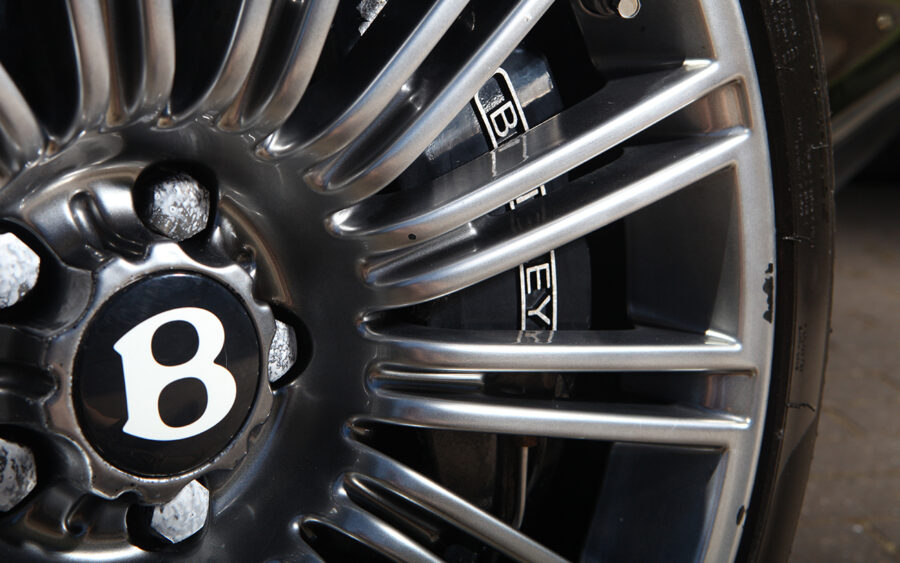
Suspension, steering and brakes
On such an upmarket machine as this, checking the state of the braking system is essential, particularly the discs themselves. The fronts are 405mm vented and the rears are 335mm, although there was a factory option of carbon ceramic discs (420mm fronts, 356mm rears), which were the largest fitted to any production car at the time. To replace the standard items on a GT, you can expect to pay up to £1000 for a set of front discs and pads, but you’ll then have labour charges on top. By comparison, the ceramic discs fitted as standard to the Supersports will cost at least ten times as much.
Still on the subject of brakes, the electronic parking brake module is a known weak spot that will mean you have no handbrake once it fails, Happily though, a replacement module isn’t expensive (usually less than £250) and it’s not an overly complex task for anyone used to working on these modern-classic Bentleys.
The GT family uses double-wishbone front suspension and a multi-link rear set-up together with air springs to help cope with the weight of the car. The use of more aluminium components from 2008 saw overall weight reduced by 35kg, at the same time that the Speed was launched featuring a 10mm lower ride height, firmer spring settings, firmer dampers and uprated anti-roll bars. For the Supersports, the car’s Continuous Damping Control (CDC) system was altered for an even more driver-focused experience.
CDC is fitted to all Continental GT models and allows the driver to choose from four settings, ranging from Comfort to Sport. This may sound complex, but the adjustable dampers have proved to be reliable in operation and generally free of issues. Nevertheless, you should still check that everything’s working as it should. And on the move, listen out for any suspension knocks, although these are usually caused by worn drop links – a fairly simple and inexpensive fix.
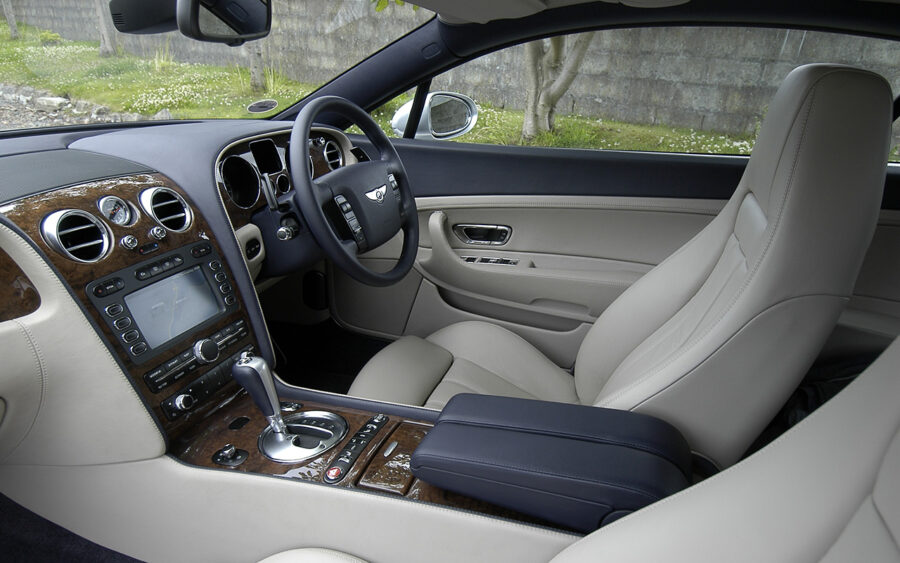
Interior, trim and electrics
The Continental GT’s interior is one of its main attractions, featuring high-quality materials and a superb standard of finish. That’s not to say it’s always problem-free, as wear to the outer bolster of each front seat can occur – and professional leather restoration doesn’t come cheap. Give all the leather a thorough inspection, watching out for any signs of scuffs and other damage. You also need to make sure that all the on-board electronics are working, including the electric seat motors.
One vital area to check is the front left-hand footwell, as early Continentals had a problem with a void in the scuttle panel filling with water if the drain became blocked. The water then ran into the footwell and damaged the carpet and trim. More importantly, the void houses a great deal of the wiring loom and a number of ECUs, so putting right any water damage can cost over £15,000. Any dampness or musty smell in this area, especially if it’s teamed with warning lights on the dashboard or any other electrical gremlins, would be cause to walk away.

Bentley Continental GT: our verdict
The Continental GT was the car that transformed Bentley’s image, a hi-tech offering with W12 power, all-wheel drive and superb handling – a combination that creates an absolute gem of a modern classic all these years later. Buy with care, as these cars can empty bank accounts at an alarming rate if you buy the wrong example. Get it right though, and you’ll get to enjoy a truly rewarding ownership (and driving) experience.
You can pick up an early Continental GT from as little as £15,000 or so… but unless you’re feeling extremely brave and have deep pockets for essential repairs, we’d advise against it. At that price, the car is likely to have problems and some major expenditure ahead. Instead, a starting budget of £22,000-25,000 is sensible, at which price you should find a standard-spec GT from around 2005, with a sensible mileage. We spotted a 48,000-mile example for £24,000, described as ‘exceptional’ – but we’d still want to check the history to make sure the car hadn’t had long periods of inactivity.
Late-model cars obviously cost more, with £50,000 or so being a typical price for an excellent, well-maintained GT from 2010. Whatever your budget, however, it pays to focus on condition and history rather than being too mileage-obsessed.




